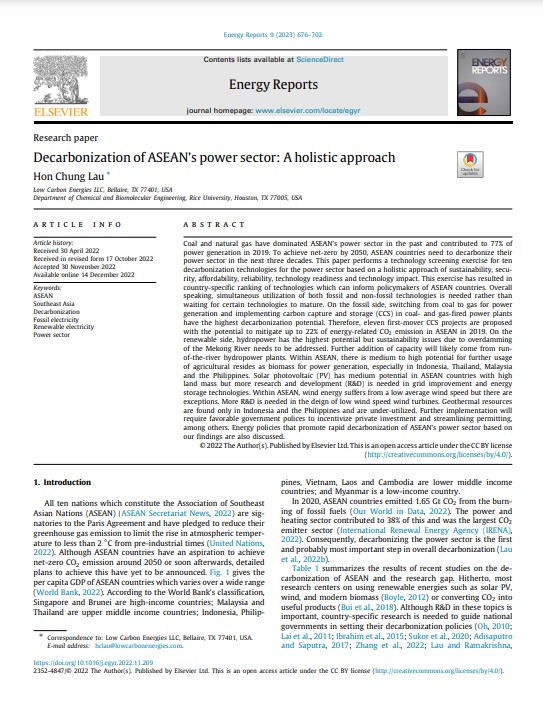
Keyword(s)
Author(s)
Hon Chung Lau
Country(ies)
Publisher
Published Date
Access
DOI
Coal and natural gas have dominated ASEAN’s power sector in the past and contributed to 77% of power generation in 2019. To achieve net-zero by 2050, ASEAN countries need to decarbonize their power sector in the next three decades. This paper performs a technology screening exercise for ten decarbonization technologies for the power sector based on a holistic approach of sustainability, security, affordability, reliability, technology readiness and technology impact. This exercise has resulted in country-specific ranking of technologies which can inform policymakers of ASEAN countries. Overall speaking, simultaneous utilization of both fossil and non-fossil technologies is needed rather than waiting for certain technologies to mature. On the fossil side, switching from coal to gas for power generation and implementing carbon capture and storage (CCS) in coal- and gas-fired power plants have the highest decarbonization potential. Therefore, eleven first-mover CCS projects are proposed with the potential to mitigate up to 22% of energy-related CO2 emission in ASEAN in 2019. On the renewable side, hydropower has the highest potential but sustainability issues due to over damming of the Mekong River needs to be addressed. Further addition of capacity will likely come from run-of-the-river hydropower plants. Within ASEAN, there is medium to high potential for further usage of agricultural resides as biomass for power generation, especially in Indonesia, Thailand, Malaysia and the Philippines. Solar photovoltaic (PV) has medium potential in ASEAN countries with high land mass but more research and development (R&D) is needed in grid improvement and energy storage technologies. Within ASEAN, wind energy suffers from a low average wind speed but there are exceptions. More R&D is needed in the deign of low wind speed wind turbines. Geothermal resources are found only in Indonesia and the Philippines and are under-utilized. Further implementation will require favorable government polices to incentivize private investment and streamlining permitting, among others. Energy policies that promote rapid decarbonization of ASEAN’s power sector based on our findings are also discussed.